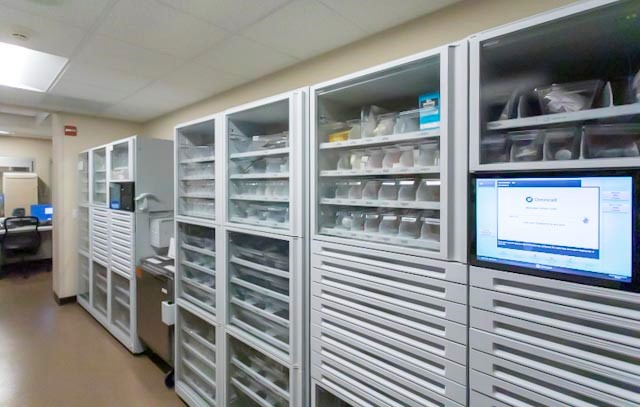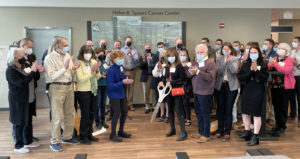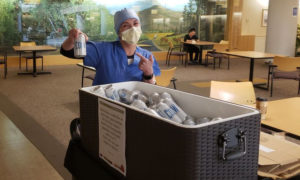Share:
We’re adding new medication safeguards

A few weeks ago, we discussed the case of RaDonda Vaught, a former nurse from Vanderbilt University who was found guilty of negligent homicide following a 2017 medication error. As part of Asante’s commitment to learning through mistakes, an assessment is underway to identify system issues to prevent errors like this one.
The “2019 ISMP Guidelines for Safe Electronic Communication of Medication Information” recommends using the first five letters of a drug’s name during product searches. As highlighted by ISMP, there is a significant risk that only getting “near” using one, two or three letters can result in drug selection errors by the user. Asante’s current Omnicells require only one letter.
Following best practice recommendations, effective May 16, all Omnicells will be updated to require five-letter searches to prevent similar drug names from appearing on the screen and the wrong drug mistakenly selected. We recently investigated a patient safety event where a nurse mistakenly administered epinephrine instead of ephedrine after using one or two characters to search for the drug (E-P). Requiring five-letter searches likely would have prevented this error.
While safety during medication administration is of the highest priority, we recognize transitioning from a one- to a five-letter search may impact daily workflows. After hearing feedback from the Asante Medication Administration Safety Team, clinical nurse specialists and practice advisers, and bedside RNs, here are some frequently asked questions related to this change:
When navigating the ordered medications in the patient profile, will I be able to search by one letter or will I need to use five?
Users will need to search with five characters including any spaces for all Omnicell medication lists (e.g., scheduled meds, PRN meds and stocked meds). It will be easier to find a medication on a profiled Omnicell where a patient has scheduled and PRN medications because the lists are likely shorter and easier to find a specific medication.
What if I am in a non-profiled Omnicell?
Non-profiled Omnicells typically are found in procedural areas (e.g., cath lab and OR) and do not have a patient active med, PRN or schedule medication list. These units will require a five-letter search to find the drug.
If I’m searching for a medication not currently on the patient profile (override pull), how many letters will I need to enter for mediations to display?
Medication searches for drugs obtained via override (stocked meds) require a five-character search.
If I search by a brand name will it pull up a generic name or vice-versa?
Yes, if both names are built into the Omnicell drug record.
What happens if I don’t know how to spell a drug name?
Spelling of complex drug names is a consideration with moving to a five-character approach, as there have been cases of nurses not being able to find the drug they need in a timely manner during urgent or emergent events. Nurses can familiarize themselves with the drugs commonly administered on their units, and leaders can work with staff to make spelling guides posted on Omnicell for these medications.
Additionally, staff can consider looking up drug names in a drug reference or asking a nearby coworker prior to searching in the Omnicell for those hard-to-spell drugs. Please work with your leaders or professional development teams around these potential concerns to determine the best way to approach this on your unit.
Sometimes commonly administered drugs (or drugs you know will be ordered by a provider but have not yet been ordered) are being removed from the Omnicell via override. Is anything being done about that?
Yes. A small team of pharmacists and clinical nurse specialists and practice advisers is looking at workflows around drugs commonly given via override to optimize the ordering process and ensure these drugs are available on the patient profile. If you know of a drug or process you would like looked at, please email
dr*********************@as****.org
.
An additional reminder: If a patient does not have a medication ordered and verified on their profile (e.g., an override pull), it will not flag as the wrong medication even when scanned by the administering RN. This is because there is no verified medication to compare the scan against. While there are valid reasons for override pulls, please continue to use the “rights” of medication administration to validate the override is the right drug, dose and route, for the right patient, for the right reason, administered at the right time.
Asante will continue to assess for opportunities to eliminate system issues and prevent this error from happening within our health care system. While we cannot change the outcome for RaDonda Vaught, we can learn from her brave transparency about an error.
If you have a question, please contact the author or relevant department directly.



